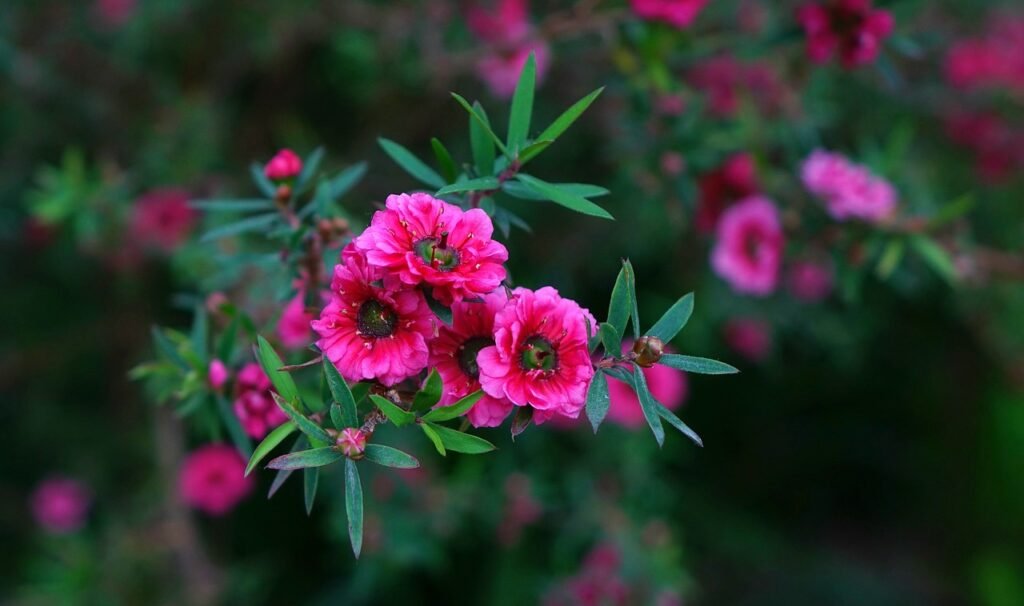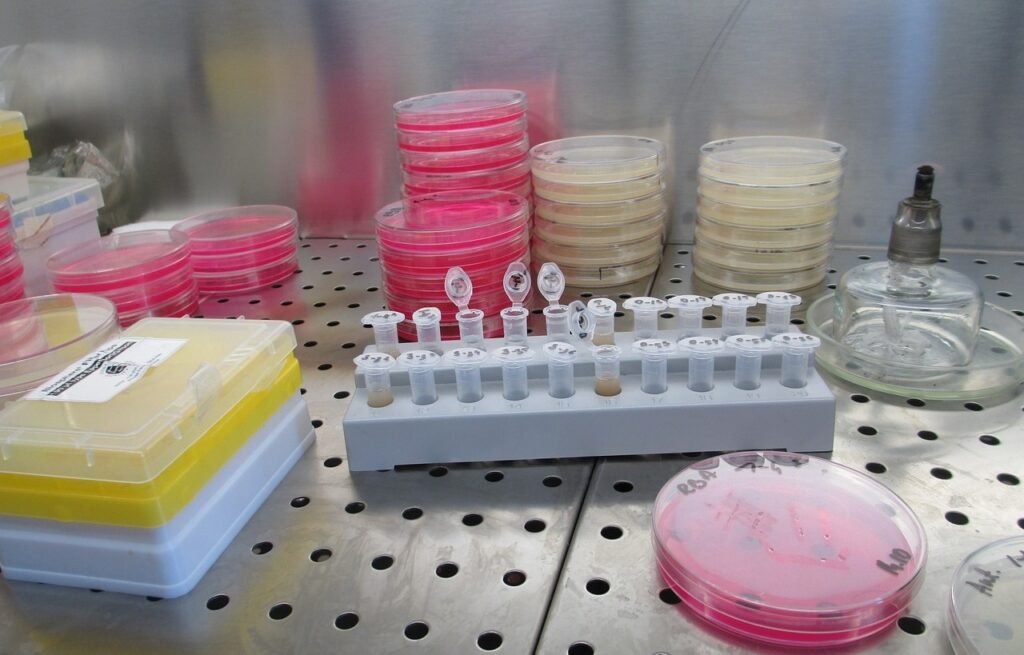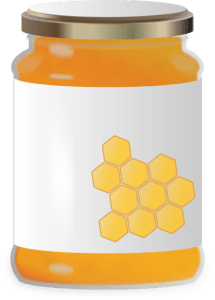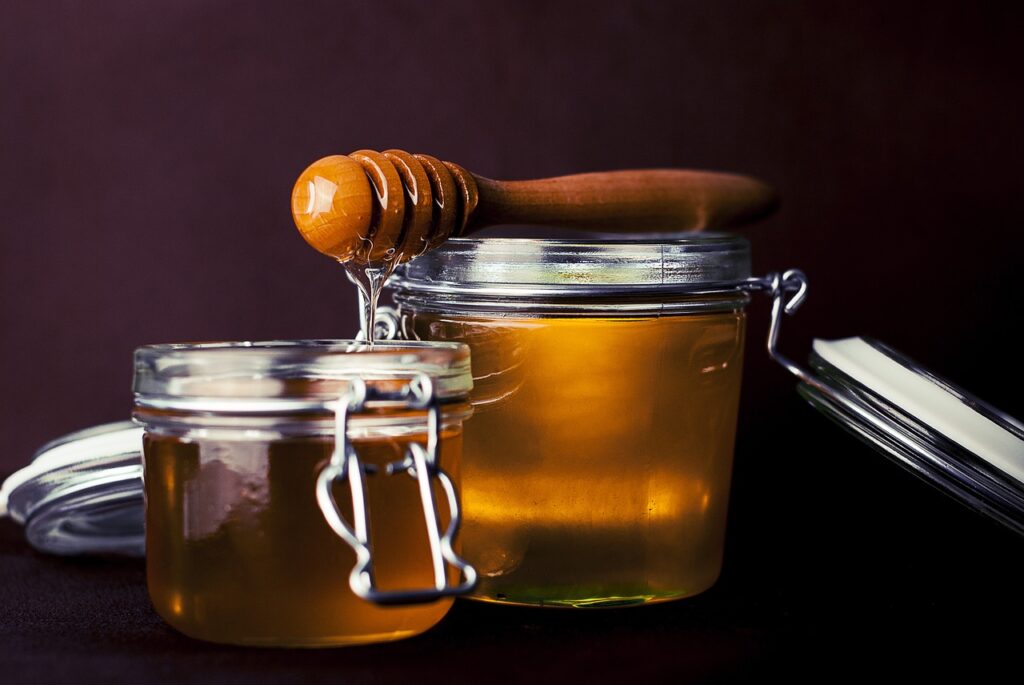Manuka Honey for Skin: Tremendous Benefits for Healthier Skin
Why buy expensive skincare products or undergo skin treatments when you’ve got an alternative? There’s an amazing all-natural skincare ingredient that can be applied by itself, added to your own DIY skincare recipes, and tailored to your skin type.
- What is Manuka Honey?
- Manuka Honey Properties
- How Has It Been Used in History?
- Tremendous Benefits for Healthier Skin
- How to Nourish the Skin with Manuka Honey
- How to Buy Manuka Honey
- Manuka Honey FAQs
- What makes Manuka honey beneficial for the skin?
- How can Manuka honey improve skin health?
- Can Manuka honey be used on sensitive skin?
- How do you use Manuka honey on your face?
- Is Manuka honey good for acne-prone skin?
- What skin types can benefit from Manuka honey?
- Can Manuka honey help with skin aging?
- How often should you use Manuka honey on your skin?
- What should you look for when buying Manuka honey for skincare?
- Can Manuka honey be mixed with other ingredients for skincare?
If you have ever looked into natural skincare, chances are you have come across Manuka honey. This unique variety has gained popularity for its rich texture, pleasant taste, and especially its impressive skin benefits.
You may already know that honey in general has soothing and moisturizing properties, but what makes Manuka honey stand apart from other types? Let’s take a closer look and answer a few common questions about this golden, nutrient-packed remedy.
- Does Manuka honey actually work?
- Where does Manuka honey come from?
- How is it being used to improve skin health?
Manuka honey is more than just a sweet treat. It is one of nature’s most powerful skincare ingredients, known for supporting clearer, healthier, and more balanced skin in a gentle and natural way.
What is Manuka Honey?
Manuka honey is a unique variety of honey made by bees that gather nectar from the manuka shrub, or Leptospermum scoparium, which grows throughout New Zealand. This shrub can reach a height of about 7 to 16 feet and produces small white or pale pink flowers with a light, pleasant fragrance.
At first glance, the blossoms look very similar to those of the kanuka tree (Kunzea ericoides), a related species that can grow much taller, sometimes up to 30 feet. While the two plants are easy to confuse, the manuka shrub produces nectar with special properties that make its honey distinct.
The nectar from the manuka flower contains natural compounds that give Manuka honey its well-known antibacterial, soothing, and healing qualities, making it a favorite for both natural wellness and skincare.

The honey produced from the manuka plant is most effective when it is raw and unheated, since processing can reduce its natural enzymes and beneficial compounds. In its pure form, manuka honey is believed to have stronger therapeutic properties than most other types of honey.
Interestingly, early European settlers in New Zealand once viewed the manuka plant as a problem. They considered it invasive because it spread quickly and would return even after land was cleared. Over time, however, the same hardy nature that once frustrated settlers became a benefit. Today, the manuka plant is used in revegetation projects and to help stabilize eroded slopes.
For beekeepers, producing manuka honey is all about location. To ensure their bees collect nectar from manuka blossoms rather than other flowering plants, hives are placed near dense areas of manuka shrubs. The bees gather nectar and pollen from the blooms, gradually filling the honeycomb with this distinct, golden honey known for its powerful natural properties.
Manuka Honey Properties
Manuka honey is known for its natural anti-inflammatory and antibacterial qualities, making it a powerful ingredient for calming redness and irritation from acne, cysts, or pimples. These same properties also help support the skin’s natural healing process, making it a gentle yet effective option for a variety of skin concerns.
In New Zealand and around the world, the highest-quality varieties are often referred to as medical manuka honey. This type of honey is used in clinical settings for treating burns, wounds, and infections because of its unique ability to keep the affected area clean while supporting tissue repair.
Research suggests that manuka honey contains special compounds, including arabinogalactan proteins, that may help stimulate immune activity at wound sites. This contributes to faster healing and protection against harmful bacteria, making manuka honey one of nature’s most remarkable natural remedies for skin health.
Further studies show that the honey releases other anti-inflammatory proteins known as cytokines as well. (Source)
Manuka honey also exhibits antimicrobial activity against Staphylococcus Aureus (that resists many antibiotics) and Helicobacter Pylori, which causes stomach ulcers. In 2008, Thomas Henle, a professor at the University of Dresden, discovered that it was Methylglyoxal that gave Manuka honey its antimicrobial activity.

Therefore, research is promising in regards to Manuka honey being used as a functional food treatment for various kinds of wounds and ulcers (source). With the ever-growing body of science in regards to this special honey, more and more exciting, beneficial properties are discovered one after another.
How Has It Been Used in History?
The use of honey for healing dates back thousands of years. The earliest known medicinal reference appears on a Sumerian tablet from around 2100 to 2000 BC, describing honey as both a drug and a soothing ointment. Even Aristotle, writing between 384 and 322 BC, noted that lighter varieties of honey were “good as a salve for sore eyes and wounds.”
Manuka honey continues that long tradition. For centuries, it has been used as a natural wound dressing because of its ability to support faster healing and protect against bacterial infection.
With modern research and technology, the production of Manuka honey has become more refined and sustainable. Today’s beekeepers can harvest it efficiently while maintaining healthy bee populations and protecting the environment.
Scientific advances have also made it possible to analyze the chemical composition of different types of honey. This allows researchers to identify and measure the specific compounds that make Manuka honey so distinct, diving deeper into the compounds that give it its powerful antimicrobial and restorative properties.
Tremendous Benefits for Healthier Skin
Manuka honey offers a wide range of benefits for maintaining clear, smooth, and hydrated skin. Its natural humectant (moisture-attracting) and antibacterial properties make it a powerful ingredient for promoting healthier, more youthful-looking skin. Below are some of the key ways Manuka honey supports skin health.
Anti-Aging
Collagen plays a vital role in keeping skin firm and youthful. Manuka honey has been shown to help support collagen cross-linking, which improves the skin’s structure and elasticity. It also contains amino acids, the essential building blocks of collagen production. With consistent use, it can help reduce the appearance of fine lines and encourage a naturally radiant complexion.
Skin Cleansing
If you have tried multiple skincare products that irritated your skin or failed to deliver results, Manuka honey may be a gentle, effective alternative. Its anti-inflammatory and antimicrobial properties help soothe irritation, calm redness, and support the healing of blemishes.
Although it feels sticky when applied, Manuka honey is one of the best natural cleansers for balancing your skin’s pH and removing dead skin cells. Regular use can leave your complexion clearer, smoother, and noticeably brighter.
Hydration
One of Manuka honey’s most impressive qualities is its ability to draw and retain moisture. Because it is hygroscopic, it naturally attracts water from the air and helps lock it into the skin. This deep hydration improves skin elasticity, promotes cell renewal, and aids in the healing of dry patches and minor irritations.
Using Manuka honey as part of your regular skincare routine can help your skin stay soft, supple, and refreshed, all while supporting a healthy, natural glow.
How to Nourish the Skin with Manuka Honey
There are many other ways you can use Manuka honey, depending on your purpose. However you use it, remember, it’s honey. That means that it’s very sticky. So, try to keep it out of your hair. The following will guide you on how to use Manuka honey for a couple of specific uses:
Manuka Face Mask
Manuka honey as a face mask:
- Wash your face with your regular cleanser first in order to get the best results.
- After washing and drying your skin, wet or mist it a bit in order to make the application of the honey easier.
- Apply one tablespoon of the honey evenly over your entire face. Leave it there for 15 to 20 minutes. During this time, the antibacterial activity of Manuka honey takes place.
- Wash it off with warm water and pat dry.
Overnight Scar Treatment
If you’ve got a special occasion the next day and you have accidental or unwanted scars on your face, your best friend for the night is Manuka honey. It’s great for soothing redness and treating scars.
Plus, it keeps skin moisturized. Nothing will instantly heal your skin, and as always, real results happen over time.
Be sure to make Manuka honey part of your regular beauty regimen because it quite effectively assists in skin healing.
To use it overnight:
- Apply a thin layer of honey to the moistened face and gently massage it into the skin for further skin absorption.
- Now, I’m sure you don’t want to mess up your pillow or bedding, so just cover them with a towel or an old cloth.
- When you wake up the next morning, wash your face and remove any remnants of honey.
- Once your face is clean, pat dry.
Skin Cleanser
Manuka honey makes a great natural skin cleanser since it helps to eliminate bacteria. If you don’t have the time to apply a face mask or let the honey remain on your skin overnight, you can use it as a quick facial cleanser as well.
Even though you may not have as much time to let the honey remain on your skin, you can increase the amount of time by simply spreading the honey on your skin before you floss, brush your teeth, or do anything else that’s part of your morning routine.
That way, the honey will nourish your skin the entire time as you get ready to jump in the shower.
Use it as a skin cleanser:
- Apply honey to moistened skin before getting a shower
- Thoroughly massage honey into the skin. If the honey is too thick, add more water.
- Jump into the shower and rinse.
Acne and Pimple Treatment
As you may know, other anti-acne facial cleansers have ingredients that can worsen your skin’s condition. On the other hand, Manuka honey is a natural and easy remedy for reducing inflammation and speeding up the healing of acne and pimples. It can even be combined with aloe and other natural ingredients known to help with acne.
To Treat Acne:
- Apply a thin amount of the honey to the affected area. For single pimples or blemishes, apply the honey to a small band-aid.
- Cover it with a band-aid to restrain the spread of the honey while keeping it in contact with the affected area.
- Leave it on overnight for faster healing. You can also leave it on for at least 30 minutes if you don’t want to do the overnight solution.
- Remove the band-aid with warm water and rinse off.
- Repeat this application until your acne blemishes and pimples fade away.
*Note: In order to keep your skin moisturized after cleansing with any of the above methods we mentioned, just add a bit of this honey into your favorite all-natural moisturizer.
How to Buy Manuka Honey
When buying Manuka honey, it is important to understand how its strength or bioactivity is measured. These ratings help you identify how potent and pure the honey is, ensuring that you get the best possible product for your needs. Manuka honey is usually labeled using one of two systems: UMF (Unique Manuka Factor) or MGO (Methylglyoxal). Both indicate the honey’s antibacterial strength, but they use different scales.
UMF Rating
The UMF, or Unique Manuka Factor, measures the non-peroxide activity (NPA) in the honey — the natural antibacterial strength that remains even when the hydrogen peroxide activity found in regular honey fades. The UMF certification also confirms that the honey is genuine, unadulterated Manuka honey produced in New Zealand.
Here is a simple breakdown of UMF strength levels:
- UMF 5–9: Low activity, suitable for daily use or general wellness
- UMF 10–15: Moderate activity, often used for skincare or mild health support
- UMF 16+: High activity, ideal for targeted therapeutic or medicinal purposes
MGO Rating
The MGO rating refers to the concentration of methylglyoxal, the compound responsible for Manuka honey’s antibacterial properties. MGO is measured in parts per million (ppm) and correlates directly to the honey’s NPA level.
In general, higher MGO numbers indicate stronger antibacterial activity:
- MGO 100+: Mild potency, good for daily use
- MGO 250+: Moderate potency, suitable for skin health and immune support
- MGO 400+ to 550+: High potency, used for more targeted or therapeutic purposes
When choosing a Manuka honey, look for certified UMF or MGO labeling to ensure authenticity. This guarantees that the honey has been tested for purity and potency, and that you are getting the real benefits this remarkable natural product has to offer.
*To see how UMF relates to MGO quantitatively, click here.
Decoding Manuka Honey Product Labels

As usual, these ratings can be quite confusing! If you’re searching for the best Manuka honey to buy and are presented with either of the above rating methods, you can check out this handy UMF/MGO calculator here in order to see the equivalent value in the opposite rating method.
In any case, the research is solid. Manuka honey is indeed packed full of benefits! Therefore, be sure to include Manuka honey as part of your beauty regimen to experience healthier skin.
*Note: Choose UMF 16+ or MGO 500+ Grades of Manuka Honey For the Best Results
Manuka Honey FAQs
What makes Manuka honey beneficial for the skin?
Manuka honey’s antibacterial and anti-inflammatory properties make it especially helpful for maintaining clear and healthy skin. It helps soothe irritation, calm redness, and may reduce the occurrence of acne by keeping pores clean and balanced.
How can Manuka honey improve skin health?
Its natural ability to attract and retain moisture keeps skin hydrated, while its wound-healing and antimicrobial properties support a clearer, smoother complexion. Regular use can leave your skin looking refreshed and more radiant.
Can Manuka honey be used on sensitive skin?
Yes. Manuka honey is generally gentle enough for sensitive skin. However, it is always best to perform a patch test first to make sure there are no adverse reactions before applying it more widely.
How do you use Manuka honey on your face?
Apply a thin layer of Manuka honey to clean skin as a mask. Leave it on for 15 to 20 minutes, then rinse with warm water. This simple treatment helps cleanse pores, hydrate skin, and promote a healthy glow.
Is Manuka honey good for acne-prone skin?
Yes. Its antibacterial qualities help reduce acne-causing bacteria and inflammation, while its soothing nature supports healing without over-drying the skin.
What skin types can benefit from Manuka honey?
All skin types — oily, dry, and combination — can benefit from its moisturizing and balancing effects. It helps hydrate dry areas while keeping oil production in check.
Can Manuka honey help with skin aging?
The antioxidants in Manuka honey help combat oxidative stress, which contributes to visible signs of aging such as fine lines and dullness. It also supports collagen health for firmer, smoother skin.
How often should you use Manuka honey on your skin?
Manuka honey can be used daily in small amounts for gentle care, while masks or spot treatments are best used two to three times per week for more intensive results.
What should you look for when buying Manuka honey for skincare?
Choose a product with a higher UMF or MGO rating, as these indicate greater levels of the active compounds responsible for its antibacterial and healing benefits. Always look for authentic certification from New Zealand producers.
Can Manuka honey be mixed with other ingredients for skincare?
Yes. Manuka honey blends beautifully with natural ingredients like oatmeal, yogurt, or aloe vera for enhanced hydration and soothing effects. These simple combinations can elevate your homemade skincare routine.


